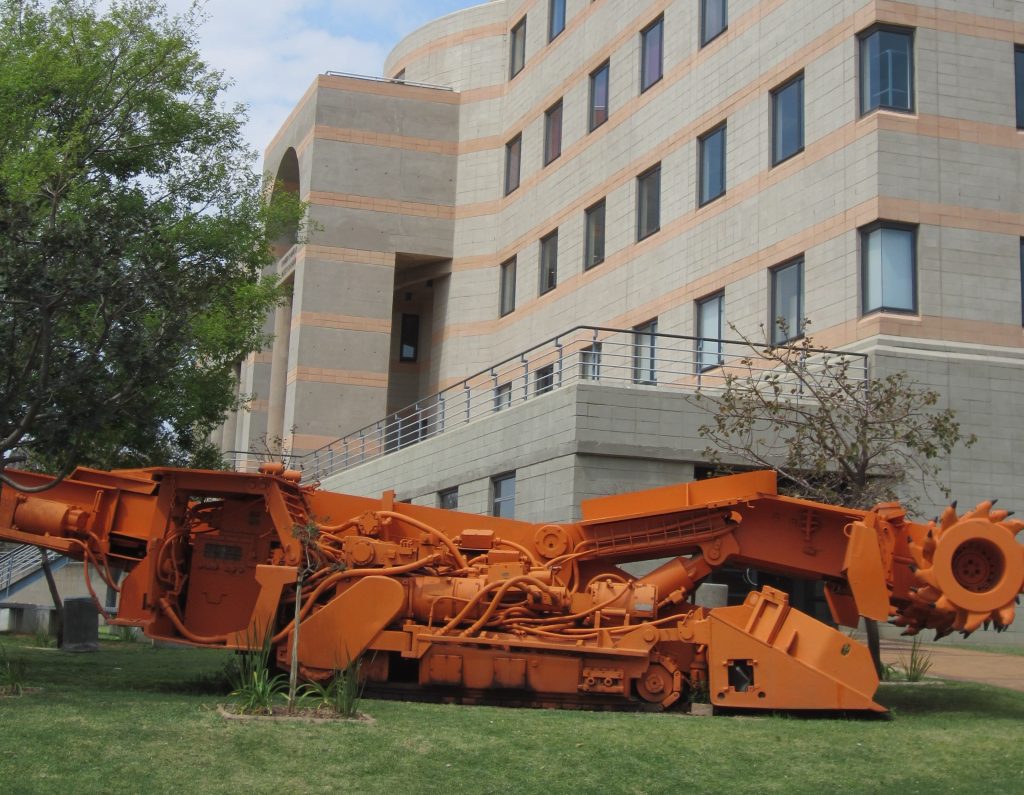Celebrating 120 years of service to the mining industry, the Wits School of Mining Engineering is the seed from which the University of the Witwatersrand grew, and is now the largest mining school in the English-speaking world.
“The School of Mining Engineering is one of the leading schools in the world. Our academics and students, supported by industry, are working together to shape the future of mining on the continent and beyond,” said Professor Adam Habib, Wits Vice-Chancellor and Principal. “We are researching cutting-edge deep-level mining techniques, developing new methods and systems to ensure the safety and wellbeing of miners, researching new technologies in mechanised mining systems and working to ensure the sustainability and future of the mining industry so that it is beneficial for all. We extend our congratulations to the School as it celebrates this momentous milestone.”
According to Head of School Professor Cuthbert Musingwini, the growth of the School has taken place alongside a strong commitment to excellence – placing it as number one in Africa and at 22nd position in the recent QS World University ranking of the world’s Top 50 minerals and mining schools.
Graduates enter the world of work with qualifications that are internationally recognised in terms of the Washington Accord agreement, he said.
In line with Wits University’s Vision 2022 strategy, which focuses on making Wits a research-intensive University, the School has boosted its postgraduate numbers to create a growing pool of mining engineering researchers tackling both fundamental and applied research. The School graduated seven doctoral students in 2015 and another five last year.
“While most of the research conducted by students up to doctoral level tends to be fundamental research, we have built considerable capacity for applied research through our Centres of Excellence: the Centre for Mechanised Mining Systems, and the Centre for Sustainability in Mining and Industry,” said Professor Musingwini. “Leveraging our close links with the private sector – among both mining companies and service providers – we equip these Centres to tackle pressing issues facing the future of mining.”
Much of the School’s research has already been highly acclaimed in the ways that it has advanced the sector. One of the most memorable intellectual breakthroughs was Wits alumnus Danie Krige’s pioneering work applying insights in statistics to the valuation of new gold mines, using a limited number of boreholes. The technique, which became known as ‘kriging’ after its originator, helped improve ore evaluation techniques and reduced the financial risk of investing in mining projects.
Other contributions include: former senior lecturer Dr Gys Landman’s research at Wits which advanced stone-dusting technologies for the coal mining sector; past Head of School Professor Fred Cawood’s research into mining tax which helped refine government’s mine taxation and royalty formula; Professor Musingwini’s research which led to the platinum sector’s adoption of the short cross-cut mining method; Professor Halil Yilmaz’s research on developing standard testing of thin spray-on liners for supporting mine excavations; and Professor Gordon Smith’s research on a strategic planning framework which is being used in some of the platinum mining companies.
To continue this proud research tradition, the School’s staff – which is today fully staffed – can boast three full professorships, three associate professorships and four National Research Foundation (NRF) rated researchers. Nine staff members are also currently registered for their doctoral degrees.
“Our competent and committed academic staff have ensured that we maintain firm relationships with the mining sector,” said Professor Musingwini. “With the support of the Mining Qualifications Authority and the Minerals Education Trust Fund, we have been able appoint and retain academics of the highest standard.”
The emphasis on research output has meant that output rates have improved markedly in recent years, to reach almost 35 research output units in 2016 – making the School a leading research entity in the Faculty of Engineering and the Built Environment at Wits.
Professor Ian Jandrell, Dean of the Faculty, points out that the School has always been seen as a leader in all of its endeavours.
“The School has effectively evolved from a training academy focusing on the very practical needs of an emerging industry, to serving a transforming industry, and to continually engaging in world-leading research,” said Professor Jandrell. “It is not surprising that one of the 21st Century Institutes hosted by the Faculty is the Wits Mining Institute – a platform built on the acknowledgement of the need for trans- and multi-disciplinary research into mining as we re-imagine this industry and its role in society.”
Jandrell emphasised that the on-going and strong industry support for the School is clear testament to its relevance to our city, our industry and our economy. The School of Mining Engineering is home to some of the highest-tech and cross-cutting research, making it a tantalising home for budding researchers from across the world.
“We are deeply proud of the number of international researchers who choose this School, and who add value through their international experience and expertise,” he added. “Nevertheless, the School has never lost sight of its embeddedness in the South African landscape. This is a very special School, and one that we hold dear in all our endeavours.”
The School’s contribution to industry is also reflected in the numerous leadership roles that staff play in professional and industry bodies. Professor Musingwini is currently the President of the Southern African Institute of Mining and Metallurgy, an august organisation once headed by the School’s Emeritus Professor Dick Stacey, the School’s Visiting Professor Nielen van der Merwe, and the School’s Honourary Adjunct Professor John Cruise. Professor Cawood is a past President of the Institute of Mine Surveyors of South Africa, and Visiting Professor Christina Dohm chairs the Geostatistical Association of Southern Africa.











